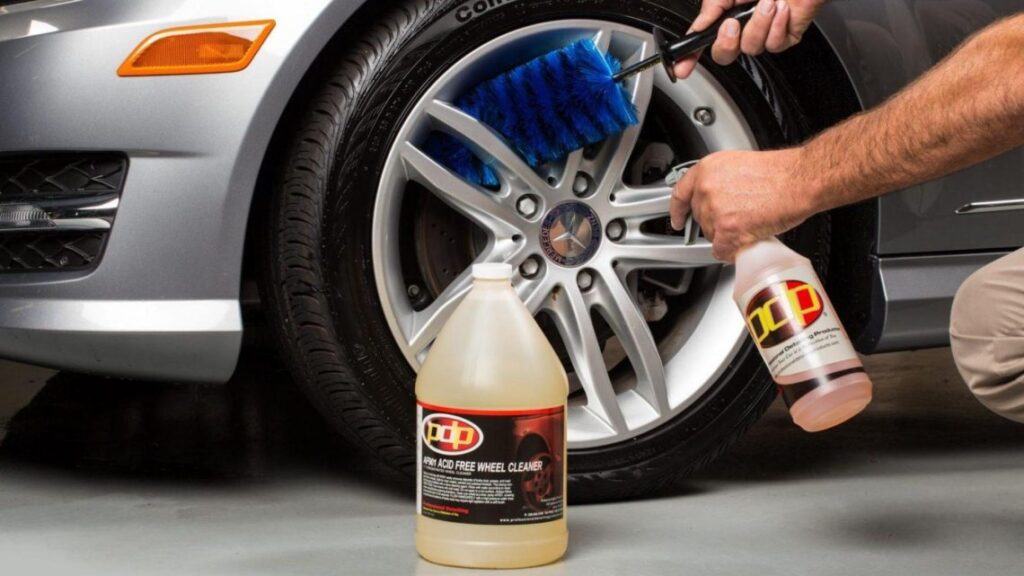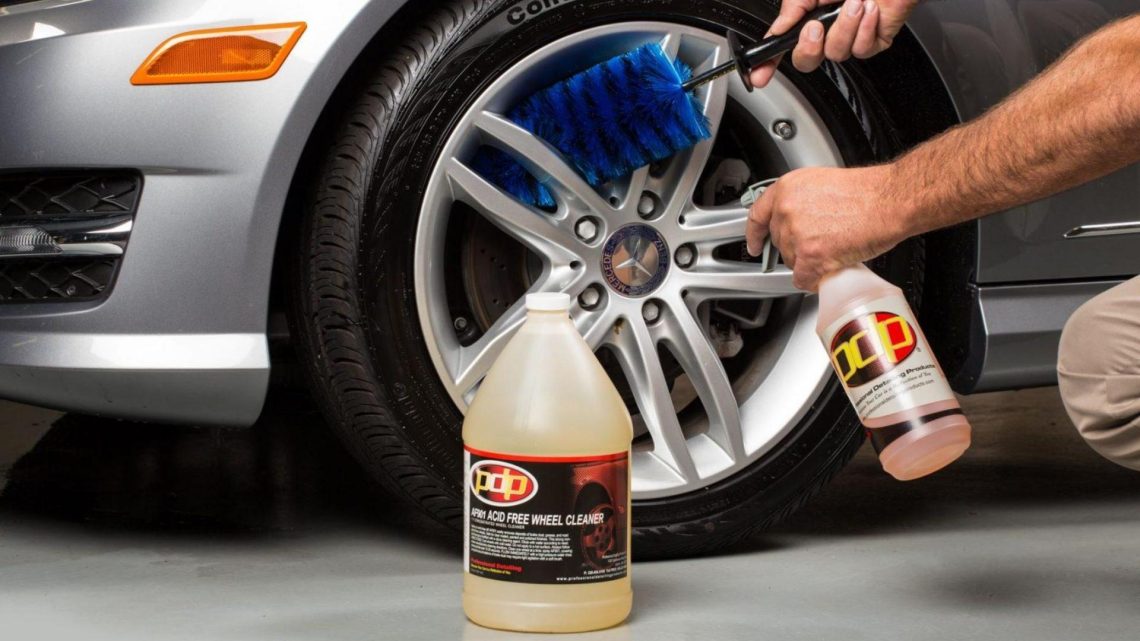
The Ultimate Guide to Wheel Cleaner for Brake Dust Removal
Brake dust. Those two words can strike fear into the heart of any car enthusiast. It’s that unsightly, corrosive grime that clings to your wheels, making them look dull and neglected. Fortunately, a good wheel cleaner is your best defense. But with so many products on the market, how do you choose the right one, especially for tackling stubborn brake dust? This comprehensive guide will walk you through everything you need to know about selecting and using the best wheel cleaner to keep your wheels looking their best, free from the ravages of brake dust.
Understanding Brake Dust and Its Impact
Brake dust is a byproduct of the friction created when your brake pads press against the rotors to slow or stop your vehicle. It’s primarily composed of metallic particles from the brake pads and rotor material. This isn’t just an aesthetic issue; brake dust is highly corrosive. If left unchecked, it can damage your wheels’ finish, leading to pitting, staining, and even permanent discoloration. The severity of the damage depends on the type of wheel finish (painted, clear-coated, chrome, etc.) and the aggressiveness of the brake dust itself.
Types of Wheel Cleaners: Choosing the Right Formula
Wheel cleaners come in various formulations, each with its own strengths and weaknesses. Understanding these differences is crucial for selecting the right product for your needs. Here’s a breakdown of the most common types:
- Acid-Based Wheel Cleaners: These are the most aggressive cleaners, designed for tackling heavy brake dust and grime. They contain strong acids, such as hydrofluoric acid or sulfuric acid. While highly effective, acid-based cleaners can be dangerous if not used properly. They can damage certain wheel finishes, especially polished aluminum and anodized surfaces. Always wear appropriate safety gear (gloves, eye protection) and follow the manufacturer’s instructions carefully.
- Acid-Free Wheel Cleaners: These cleaners offer a safer alternative to acid-based products. They typically use alkaline or solvent-based formulas to dissolve brake dust and other contaminants. While not as potent as acid-based cleaners, they are generally safer for all wheel types and finishes. They often require more agitation and dwell time to achieve the desired results.
- Iron Removers (Fallout Removers): These specialized cleaners target iron particles, which are a major component of brake dust. They contain chemicals that react with iron, causing it to dissolve and turn purple or red. Iron removers are highly effective at removing embedded brake dust and preventing rust. They are generally safe for most wheel finishes, but it’s always a good idea to test them in an inconspicuous area first.
- All-Wheel Cleaners: These are general-purpose cleaners designed for use on a variety of wheel types and finishes. They typically contain a blend of surfactants and solvents to lift dirt, grime, and light brake dust. All-wheel cleaners are a good option for regular maintenance and light cleaning.
Factors to Consider When Choosing a Wheel Cleaner
Beyond the type of cleaner, several other factors should influence your decision:
- Wheel Finish: This is the most important consideration. Always choose a wheel cleaner that is specifically formulated for your wheel finish. If you’re unsure, opt for an acid-free or all-wheel cleaner.
- Severity of Brake Dust: If you’re dealing with heavy brake dust buildup, you may need a more aggressive cleaner, such as an acid-based or iron remover. For light to moderate brake dust, an acid-free or all-wheel cleaner may suffice.
- Ease of Use: Consider the application method and dwell time required. Some cleaners are spray-on, rinse-off formulas, while others require more agitation and dwell time. Choose a cleaner that fits your cleaning routine and skill level.
- Safety: Always prioritize safety when using any chemical product. Wear appropriate safety gear (gloves, eye protection) and work in a well-ventilated area. Follow the manufacturer’s instructions carefully.
- Environmental Impact: Look for biodegradable and environmentally friendly wheel cleaners to minimize your impact on the environment.
Step-by-Step Guide to Cleaning Your Wheels
Follow these steps to effectively clean your wheels and remove brake dust:
- Gather Your Supplies: You’ll need a wheel cleaner, a wheel brush, a wash mitt, a hose with a spray nozzle, and a bucket of clean water.
- Rinse Your Wheels: Thoroughly rinse your wheels with water to remove loose dirt and debris. This will prevent scratching during the cleaning process.
- Apply the Wheel Cleaner: Spray the wheel cleaner evenly onto the wheel surface, following the manufacturer’s instructions. Be sure to cover all areas, including the lug nuts and crevices.
- Agitate the Cleaner: Use a wheel brush to agitate the cleaner and loosen brake dust and grime. Pay special attention to areas with heavy buildup.
- Let the Cleaner Dwell: Allow the cleaner to dwell for the recommended time, typically a few minutes. This will give it time to dissolve the brake dust and other contaminants.
- Rinse Thoroughly: Rinse the wheel thoroughly with water to remove all traces of the cleaner and brake dust.
- Dry the Wheel: Use a clean microfiber towel to dry the wheel. This will prevent water spots and streaks.
- Apply Wheel Protectant (Optional): Apply a wheel protectant to help repel brake dust and make future cleaning easier.
Tips for Preventing Brake Dust Buildup
While regular cleaning is essential, there are also steps you can take to minimize brake dust buildup:
- Use Low-Dust Brake Pads: Consider switching to low-dust brake pads. These pads are formulated to produce less brake dust than traditional pads.
- Regularly Wash Your Car: Regular car washes will help remove loose brake dust before it has a chance to become embedded in your wheels.
- Apply Wheel Protectant: Wheel protectants create a barrier that helps repel brake dust and other contaminants.
- Consider Ceramic Coating: A ceramic coating provides a durable, hydrophobic layer that makes it easier to clean your wheels and prevents brake dust from adhering to the surface.
Recommended Wheel Cleaners for Brake Dust Removal
Here are a few highly-rated wheel cleaners that are effective at removing brake dust:
- Meguiar’s Ultimate All Wheel Cleaner: A popular and effective all-wheel cleaner that is safe for most wheel finishes.
- Sonax Wheel Cleaner Plus: An acid-free iron remover that is highly effective at removing embedded brake dust.
- Adam’s Polishes Wheel Cleaner: A versatile wheel cleaner that can be used on a variety of wheel types and finishes.
- Griot’s Garage Wheel Cleaner: A concentrated wheel cleaner that can be diluted to suit your needs.
Advanced Techniques for Stubborn Brake Dust
Sometimes, regular wheel cleaners aren’t enough to remove stubborn brake dust. Here are some advanced techniques you can try:
- Clay Bar Treatment: Use a clay bar to remove embedded contaminants from your wheels. This can help smooth the surface and improve the effectiveness of your wheel cleaner.
- Polishing: If your wheels are heavily stained or pitted, you may need to polish them to restore their original finish. Use a wheel polish specifically designed for your wheel finish.
- Professional Detailing: For severe cases of brake dust damage, consider hiring a professional detailer to restore your wheels. They have the tools and expertise to tackle even the most challenging cleaning jobs.
In conclusion, choosing the right wheel cleaner is crucial for maintaining the appearance and longevity of your wheels. By understanding the different types of cleaners, considering your wheel finish, and following the proper cleaning techniques, you can effectively remove brake dust and keep your wheels looking their best. Remember to always prioritize safety and follow the manufacturer’s instructions carefully. With regular cleaning and preventative measures, you can conquer brake dust and enjoy a clean, polished ride. [See also: Best Car Washing Techniques] Look for a wheel cleaner that matches your specific needs, whether it’s for heavy brake dust removal or general maintenance. Don’t underestimate the power of a good wheel cleaner in maintaining your vehicle’s aesthetics. A clean wheel, free from brake dust, makes a significant difference. Regular use of a quality wheel cleaner is an investment in your car’s appearance and value. By choosing the right wheel cleaner, you’re not just cleaning your wheels; you’re protecting them from the damaging effects of brake dust. The market offers a wide range of wheel cleaner products, each with its unique formulation to combat brake dust. Select a wheel cleaner that fits your budget and cleaning frequency. Keeping brake dust at bay is easy with the right wheel cleaner. Make sure the wheel cleaner you choose is compatible with your wheel’s material. Using the wrong wheel cleaner can cause damage, so always double-check. A good wheel cleaner is an essential part of any car care kit. Invest in a quality wheel cleaner to keep your wheels looking new for longer.

